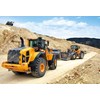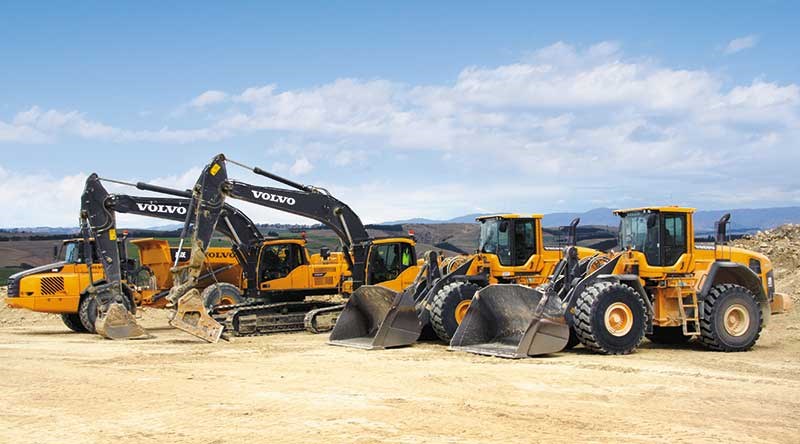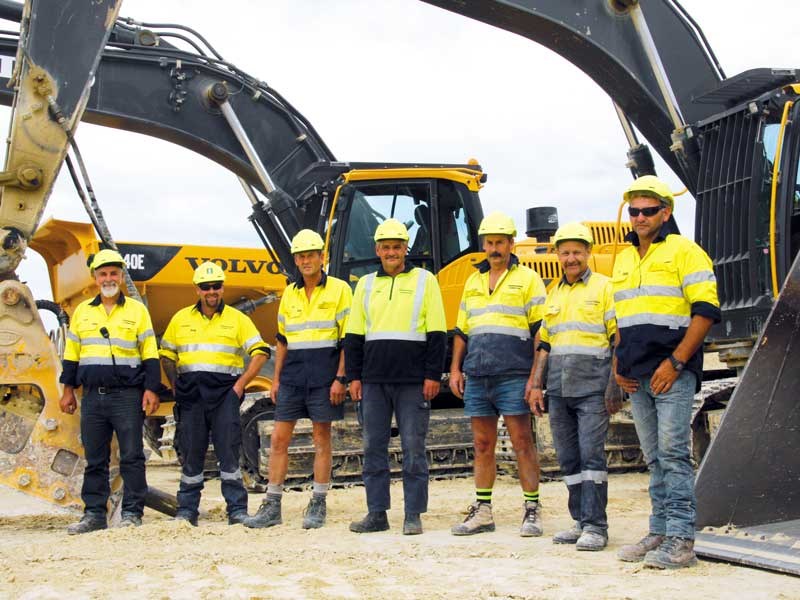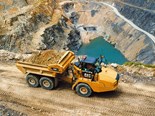Quarry visit: Ravensdown in Geraldine




 The Geraldine quarry crew
The Geraldine quarry crew


|

|

|
|
The Geraldine quarry crew
|
Driving up the access road to Ravensdowns’ lime quarry in Geraldine is more of a pleasurable scenic drive than a work field trip. Arriving at the quarry offices, one is treated to vast 360-degree views of the Canterbury plains and surrounding forest clad hills and distant mountains of McKenzie country.
Sitting 220 metres above sea level, the quarry has been in operation for over 40 years, with Ravensdown at the helm for the past 13 of those. The lime quarry produces AgLime and track rock for the local rural market, turning out over 100,000 tonnes of product annually. The production is reliant on the all-Volvo fleet of machines which are used for extraction, breaking, stockpiling and loading, to name a few of the many tasks the machines perform each day.
The fleet consists of two L150G wheel loaders; an EC240CL excavator which is used for rock breaking and loading the primary crusher; an EC380DL excavator, which is used for removing overburden and general duties; and an A40E articulated hauler. Along with the Volvos, the quarry operates a mobile primary impact crusher and a fixed tertiary crusher and processing plant.
We were greeted by the quarry manager Paul Johnston, who introduced us to his team, then kindly gave us a fascinating tour around the busy quarry, the working machines and production plant.
Including Johnston, there is a team of seven operating the quarry. As soon as we stepped out of the door, one of the local fert spreader trucks pulled up into the despatch area and one of the quarries L150G wheel loaders stepped into action to load the visiting truck full of AgLime. Heading up the hill further into the quarry we watched the EC240CL performing rock-breaking duties and the EC380DL loading the A40E dump truck.
I was given the opportunity to talk to the two excavator operators about their thoughts and experiences of the Volvo machines. I was advised by them that the excavators were "good all round," especially the comfort of the machines and the user-friendly setup providing a quality working environment with no operator fatigue. The double grouser set up on the EC380D offers very good stability around the lime site and the remote mounted greasing points allows the operators to grease everything on the machine without needing to move the boom, a handy time-saving feature.
"We have seen a dramatically reduced fuel burn on all machines since becoming an all Volvo fleet site and also a reduction in repair and maintenance costs," Johnston commented.
He also advised that production rates were being maintained using the 38-tonne Volvo excavator as a replacement to the previous 50-tonne machine and burning less than half the amount of fuel.
The Volvo fleet is monitored using the Volvo Caretrack system and the matris readings are constantly analysed and used to understand the machines performance and operating costs. This tool will continue to be used in order to establish plant replacement strategies in the future and monitor machine health.
It was a pleasure to watch the machines in action in this breath-taking location. The manager and operators all appeared to be very proud of their Volvo fleet and quarry which was evident in both the presentation of the machines and in the highly organised, smooth production of the quarry.
Never miss an issue of Deals on Wheels magazine. Subscribe here.
Keep up to date in the industry by signing up to Deals on Wheels' free newsletter or liking us on Facebook.





.jpg)

.jpg)




